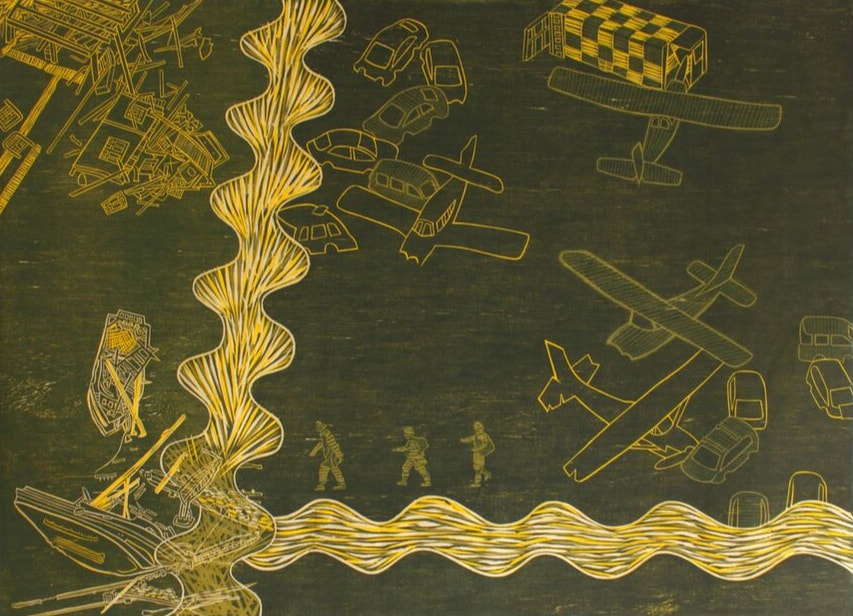APOCALYPSE NOW (2011/12)
57x70cm, Woodcut Prints
DEDICATED TO JIM MCIVOR AND ALFIE CRILLY, MY GRATITUDE AND APPRECIATION TO TWO GENTLEMEN OF BELFAST.
The 1979 film classic Apocalypse Now (directed by Francis Ford Coppola) was based loosely on the Joseph Conrad book Heart of Darkness. Too much detail about the film plot itself is not as important as the chaos within the story. The film's marketing images use a skyline in the Philippines which is orangey-red and immediately evocative of heat, alluding to a kind of doomsday hellish event. Davies uses a similar aesthetic with his choice of colours in the hand-coloured works. Oranges, ochres and reds, along with high contrast , are the pictorial devices that allude to these days of doom. He uses centrifugal marks to create a kind of explosive effect and concentric isobaric-type lines to represent seismic activity. At its most concentrated points, jagged lines are like the twitchy movements made by the pen of a Richter scale.
This series is more a of a comparison to an apocalyptic event than that in the film, or in the Bible. Davies highlights various aftermath scenes from natural disasters, such as the 2011 Japan earthquake and subsequent tsunami, which left people homeless, trawlers atop buildings, trains and planes in piles of metal - it may as well be a series about the 'great tribulation'.
Survivors' consciousness reawakens to pitiful piles of rubble and masked civil-emergency staff. One of the other disasters Davies depicts is an ecological disaster, the grounding of the MV Rena and the massive oil spill off the coast of Tauranga when it was stranded on the Astrolabe Reef. Davies' works truly capture that sense of grief, destitution and destruction in each of the works of this series.
This series is more a of a comparison to an apocalyptic event than that in the film, or in the Bible. Davies highlights various aftermath scenes from natural disasters, such as the 2011 Japan earthquake and subsequent tsunami, which left people homeless, trawlers atop buildings, trains and planes in piles of metal - it may as well be a series about the 'great tribulation'.
Survivors' consciousness reawakens to pitiful piles of rubble and masked civil-emergency staff. One of the other disasters Davies depicts is an ecological disaster, the grounding of the MV Rena and the massive oil spill off the coast of Tauranga when it was stranded on the Astrolabe Reef. Davies' works truly capture that sense of grief, destitution and destruction in each of the works of this series.









